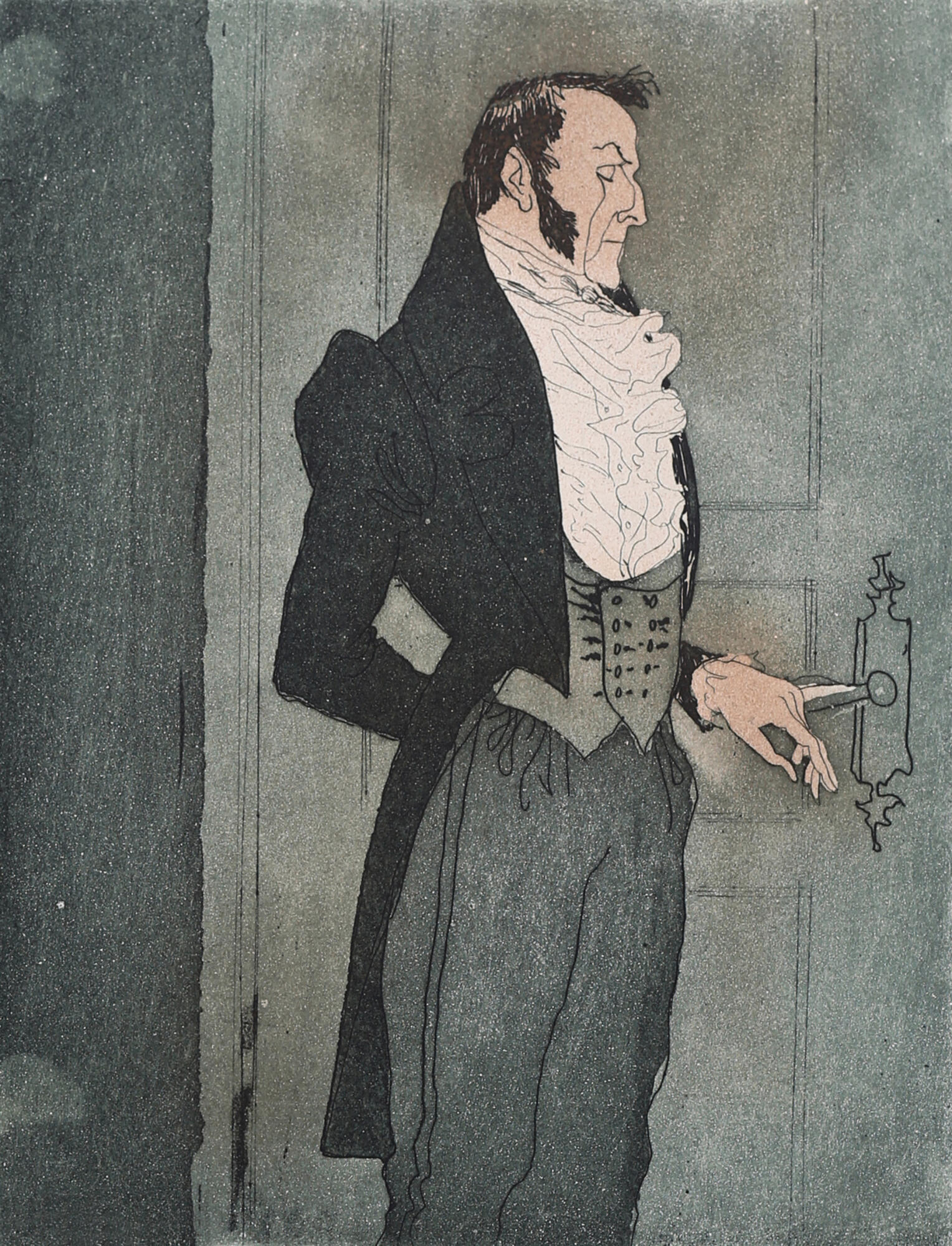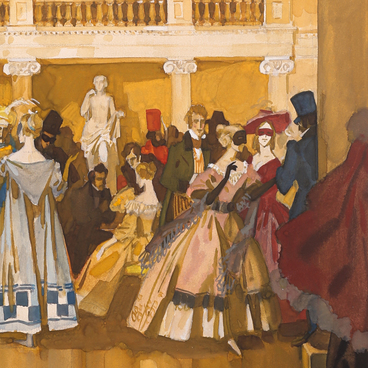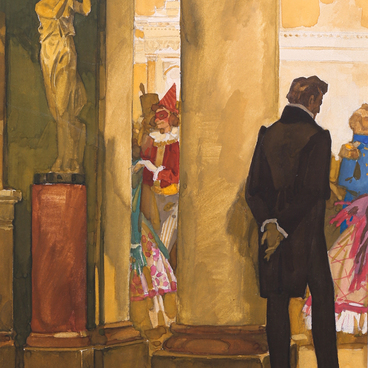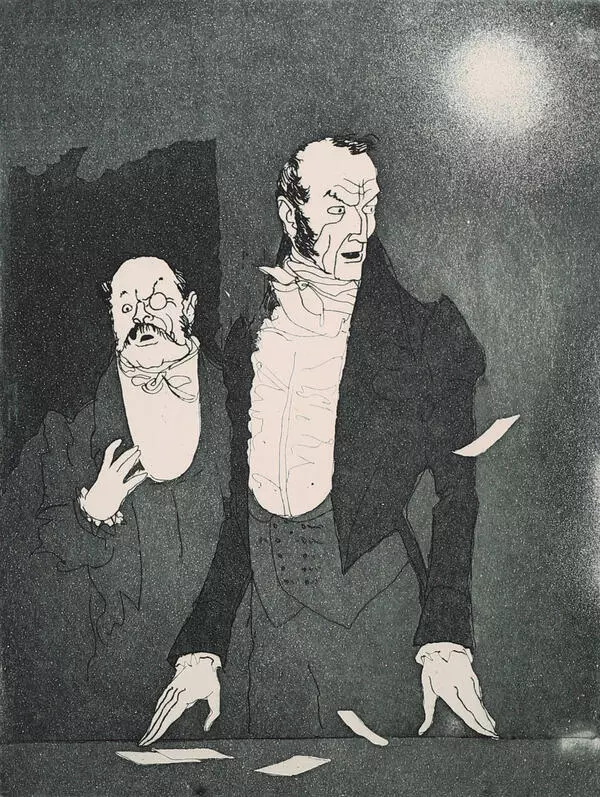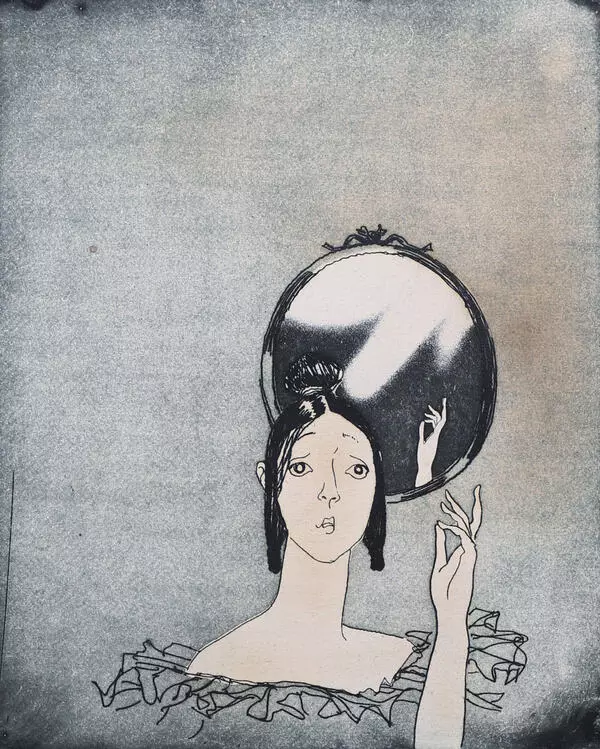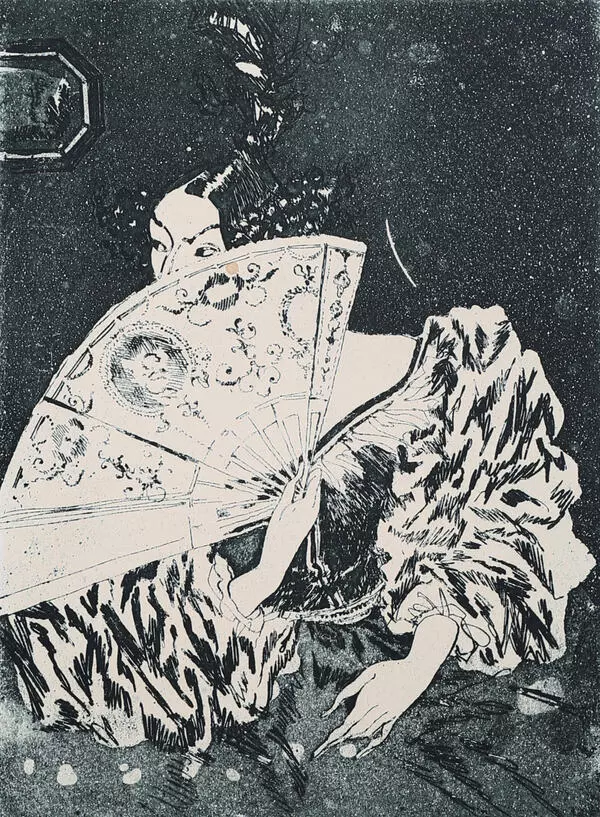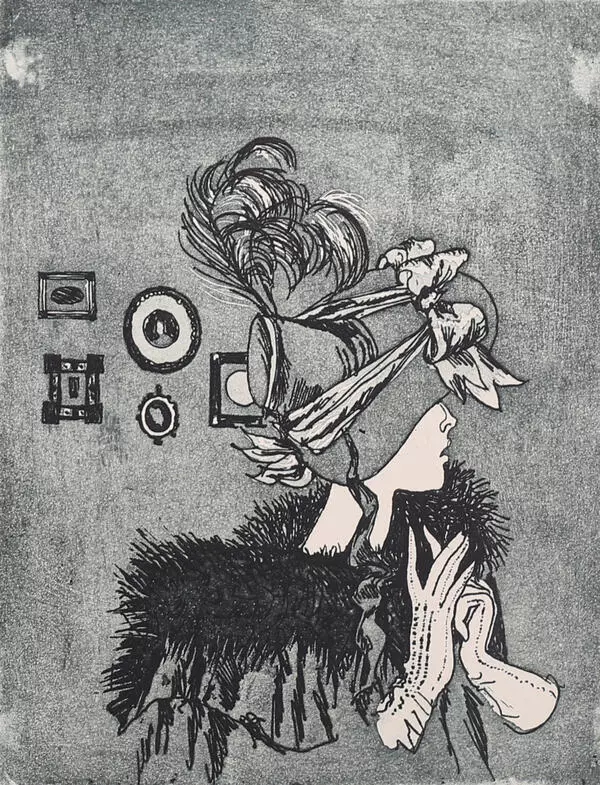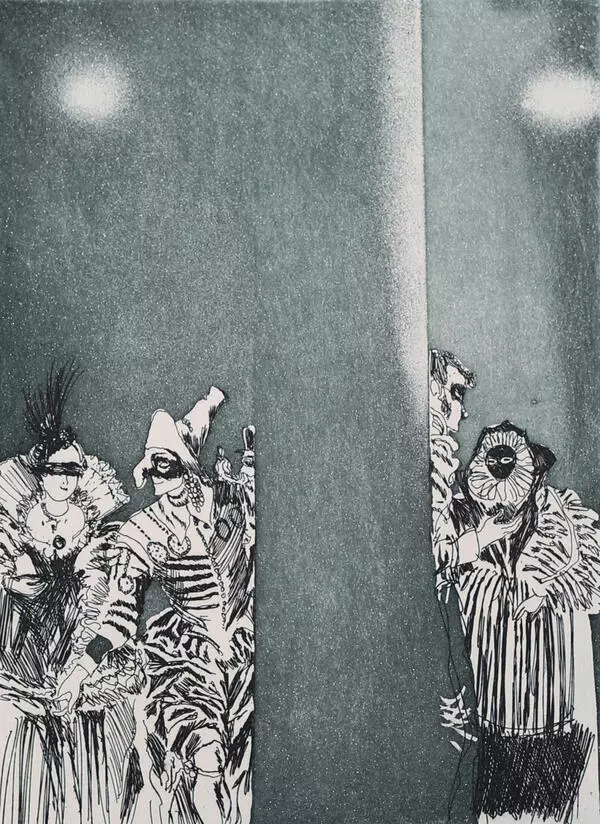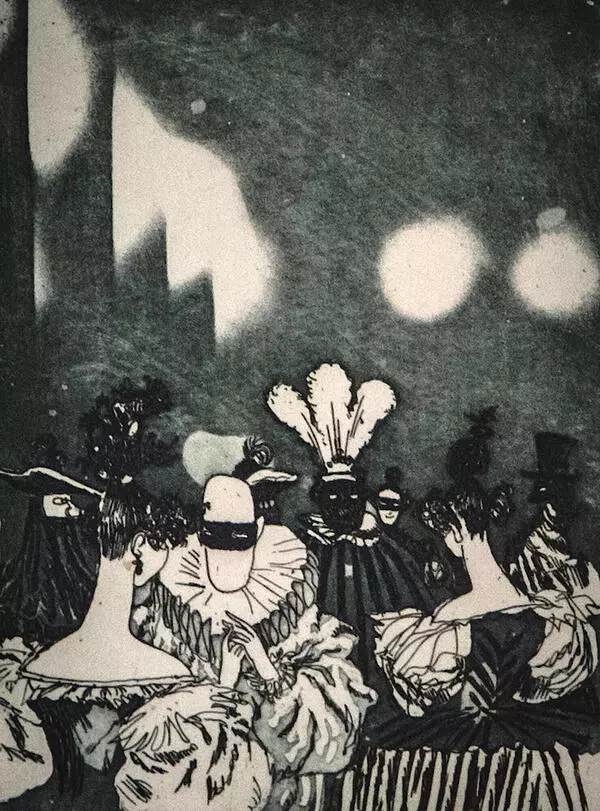The etching on display created by Svetozar Alexandrovich Ostrov depicts the character named Arbenin from the drama “Masquerade”. The 1989 Soviet edition of the play had this illustration on the left page, while the right one featured a graphic work of the same artist that showed another character called Nina.
These etchings are paired for a reason — this is how the graphic artist intended them to be. Nina is located a little lower than her husband — a composition choice that emphasizes the different feelings the characters experience after the masquerade. Arbenin is immersed in thought, he has closed his eyes and his whole demeanor radiates reproach. Svetozar Ostrov depicted him wearing a white shirt, a green waistcoat, and a tailcoat.
The vertical composition features the knee-high portrait of Arbenin nearing the side of the picture against a neutral background. His right hand is behind the back, while the left one is stretched forward and touches the door handle with his little finger. Arbenin’s head is slightly bent down, his face expresses tension. This is the scene at the end of the first act of Mikhail Lermontov’s play “Masquerade”, where Nina returns home late and has a quarrel with her husband.
In the last, fifth subscene of the third scene, Arbenin openly shares his feelings and fears with his wife by saying:
These etchings are paired for a reason — this is how the graphic artist intended them to be. Nina is located a little lower than her husband — a composition choice that emphasizes the different feelings the characters experience after the masquerade. Arbenin is immersed in thought, he has closed his eyes and his whole demeanor radiates reproach. Svetozar Ostrov depicted him wearing a white shirt, a green waistcoat, and a tailcoat.
The vertical composition features the knee-high portrait of Arbenin nearing the side of the picture against a neutral background. His right hand is behind the back, while the left one is stretched forward and touches the door handle with his little finger. Arbenin’s head is slightly bent down, his face expresses tension. This is the scene at the end of the first act of Mikhail Lermontov’s play “Masquerade”, where Nina returns home late and has a quarrel with her husband.
In the last, fifth subscene of the third scene, Arbenin openly shares his feelings and fears with his wife by saying:
